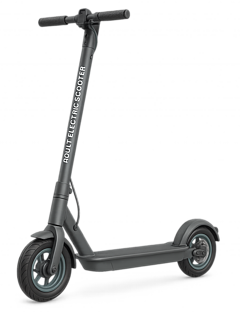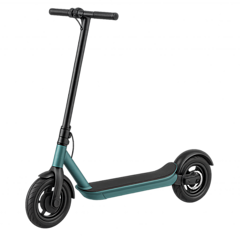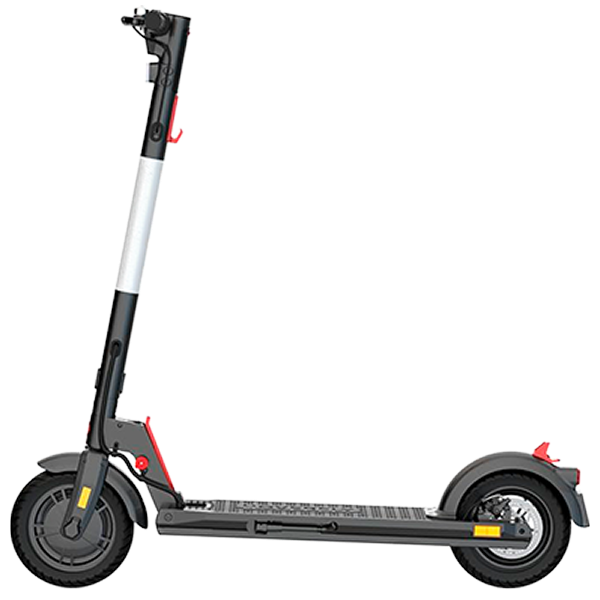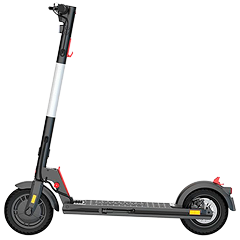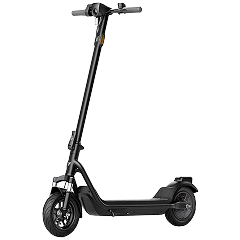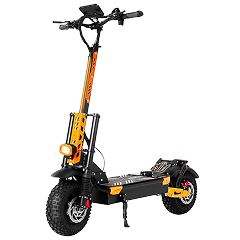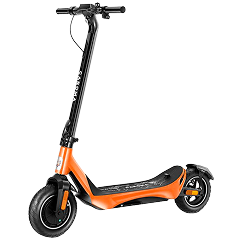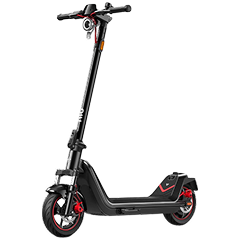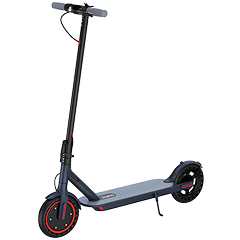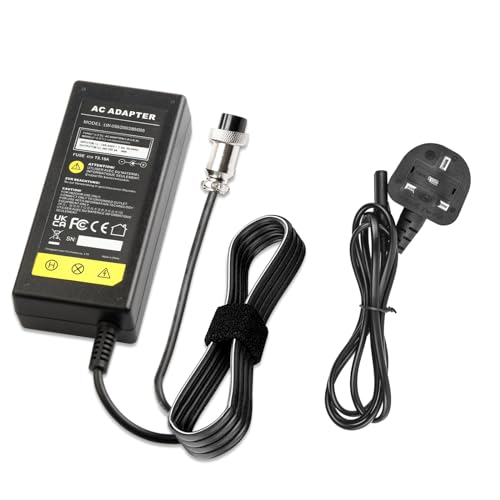Teen electric scooters occupy a unique market position. They need more performance than kids’ models to avoid being dismissed as “baby toys,” but they can’t be so powerful that they become genuinely dangerous. The best electric scooters for teens strike this balance while building in enough safety features to account for the reality that teenage brains are still developing their risk assessment capabilities.
Luckily, manufacturers have gotten much better at creating scooters specifically for this age group, with features like app-based speed limiting that let parents maintain some control while giving teens the independence they crave.
Understanding Teen-Appropriate Performance
Electric scooters for teens need to thread the needle between excitement and safety, with performance capabilities that match developing skills and judgment while still feeling legitimately fun to ride.
Age-Specific Performance at a Glance
Early Teens (13-14 Years)
Thirteen and fourteen-year-olds are typically ready for more performance than kids’ scooters offer, but they still benefit from built-in limitations and safety features. Scooters for this age group usually max out around 15-16 mph, which provides genuine excitement while remaining manageable if things go wrong.
Motor power might range from 250-350W, providing adequate acceleration and hill climbing without the jarring power delivery that can overwhelm developing riders. Battery capacities of 200-400 Wh support 10-15 miles of range or 60-90 minutes of runtime, matching both the independence needs and attention spans of early teens.
Safety features become more sophisticated at this level, often including app-based speed limiting, enhanced braking systems, and parental monitoring capabilities. The goal is providing enough performance to feel grown-up while maintaining safety margins appropriate for developing judgment and coordination.
Mid Teens (15-16 Years)
Fifteen and sixteen-year-olds can typically handle more sophisticated scooters with speeds reaching 18-20 mph. Motor power increases to 300-500W, providing better acceleration and hill climbing while still maintaining safety margins for this age group.
Battery capacities of 350-500 Wh become common, supporting ranges of 15-20 miles or 90-120 minutes of runtime. This increased capacity matches the growing independence and longer attention spans of mid-teens while supporting more ambitious riding adventures.
Features like smartphone connectivity, advanced displays, and multiple performance modes start appearing regularly in this category. However, parental override capabilities often remain available for families who want to maintain some control over performance limits.
Late Teens (17-18 Years)
Seventeen and eighteen-year-olds can often handle scooters with near-adult performance, reaching speeds of 22-25 mph with 500W+ motors. These scooters often feature 400-800 Wh batteries supporting 20-25+ mile ranges or 120+ minutes of runtime.
The line between teen and adult scooters becomes increasingly blurred at this level, with the main differences often being marketing focus and occasionally enhanced safety features like speed monitoring through smartphone apps.
Safety Features for Teen Riders
Teen scooters require a different approach to safety than either kids’ or adult models. They need features that account for developing judgment while avoiding anything that makes the scooter feel like a “baby toy.”
Speed Management and Parental Controls
With kids’ scooters, speed limiting is often built into the hardware. On the other hand, electric scooters for teens frequently use app-based systems that allow parents to set maximum speeds remotely. These systems can often be adjusted as the teen demonstrates responsible riding.
Advanced models include geofencing capabilities that can alert parents if the teen rides outside designated areas. However, the effectiveness of these features depends heavily on the teen’s willingness to cooperate rather than trying to work around them.
Speed limiting technology works best when it’s part of a larger conversation about responsible riding rather than something imposed without explanation. Tech-savvy teens can often find ways around restrictions, making clear communication about expectations just as important as the technology itself.
Enhanced Braking Systems
Teen scooters often feature more sophisticated braking systems than kids’ models, usually combining multiple brake types for redundancy and improved stopping power. The most common setup includes electronic regenerative braking with mechanical disc or drum brakes.
Dual braking systems are especially important for teen riders because they’re more likely to ride at higher speeds and in more challenging conditions than younger children. Look for scooters with independently operated front and rear brakes rather than linked systems that engage both wheels simultaneously.
Brake quality is also quite important with teen riders because they frequently push performance limits and may not have fully developed the anticipation skills that help experienced riders avoid emergency stops.
Lighting and Visibility Systems
Electric scooters for teens might include more sophisticated lighting systems than kids’ models, recognizing that teenagers are more likely to ride in varied conditions and at different times of day. Standard features include bright LED headlights, rear brake lights, and side visibility lighting.
Advanced models may include turn signals, hazard lights, and even ambient lighting systems that improve visibility while adding to the scooter’s appeal.
Smart Safety Features
Modern electric scooters for teens increasingly include connected safety features like ride monitoring. These features can provide valuable peace of mind, but they’re most effective when combined with broader safety education and communication.
GPS tracking capabilities can help parents monitor riding locations and patterns, but it’s always better when you implement them transparently rather than secretly. Teens who understand and accept monitoring are more likely to ride responsibly than those who feel they’re being spied on.
Performance Considerations for Teen Riders
Electric scooters for teens need to balance the performance teenagers want with the safety considerations their developmental stage requires. Understanding these trade-offs helps in choosing appropriate models.
Power and Acceleration Characteristics
Teen riders usually want responsive acceleration that feels exciting without being overwhelming. Motors in the 350-500W range provide good performance for most teen riders, offering snappy acceleration and adequate hill climbing without the dramatic power delivery that can cause control issues.
Dual motor setups are less common in teen-focused scooters than adult models, partly due to cost considerations but also because the additional complexity and power may not be appropriate for developing riders. When dual motors do appear, they’re usually lower-powered units rather than high-performance systems.
Progressive power delivery is often preferred over immediate full power, allowing teen riders to modulate their speed more easily and reducing the risk of unexpected acceleration that could cause loss of control.
Range and Battery Considerations
Teen riders often want longer range than kids need but may not require the maximum range that adult commuters demand. Ranges of 15-25 miles provide adequate freedom for most teen riding scenarios while keeping battery costs and weight manageable.
Battery management is quite important with teen scooters because teenagers are more likely to push range limits and may not be as diligent about charging schedules as adult riders. Look for scooters with conservative range estimates and battery management systems that protect against deep discharge.
Fast charging capabilities can be valuable for electric scooters for teens since teenagers often want to use their scooters on short notice. However, regular fast charging can reduce battery lifespan, so it’s best used occasionally rather than as the primary charging method.
Hill Climbing and Terrain Capability
Teen riders are more likely than kids to encounter varied terrain and challenging conditions, making adequate hill climbing ability important. Most teen scooters can handle moderate inclines of 10-15%, with higher-end models managing steeper grades.
However, excessive hill climbing capability often correlates with higher speeds and more powerful acceleration that might be inappropriate for teen riders. The key is finding models with enough power for local terrain without being overpowered for the rider’s skill level.
Build Quality and Durability Factors
Electric scooters for teens face different durability challenges than kids’ or adult models. They need to survive the inevitable testing of limits while maintaining safety and performance over time.
Frame Construction and Materials
Teen scooters often use similar materials to adult models, with aluminum alloy construction being most common. However, the engineering priorities may differ, with teen models usually emphasizing impact resistance and abuse tolerance over absolute weight minimization.
Look for frames with reinforced connection points, particularly around the folding mechanism and steering head. These areas see high stress and are most likely to develop problems under aggressive riding.
Quality welding and finishing become more important with teen scooters because they’re more likely to be pushed beyond their design limits. Smooth, consistent welds and proper heat treatment help ensure long-term durability.
Maintenance and Serviceability
Teen electric scooters should be designed for reasonable maintenance by adults rather than expecting teenagers to perform complex upkeep. However, basic maintenance like cleaning and charging should be straightforward for teen riders to handle independently.
Consider the availability of replacement parts and local service options when choosing a teen scooter. Teenagers are harder on equipment than adults, so plan for eventual maintenance and replacement needs.
Sizing and Ergonomics for Teen Riders
Teen riders come in a wide range of sizes and are often still growing, making proper sizing and adjustability important considerations.
Weight Limits and Growth Planning
Most electric scooters for teens have weight limits between 220-300 pounds, providing adequate capacity for most teenagers plus gear. However, consider both current weight and potential growth when making selections.
Unlike kids’ scooters where dramatic growth is expected, teen scooters are often used for shorter periods before riders transition to adult models or other transportation. Planning for 2-3 years of use is usually more practical than trying to accommodate extreme growth.
Adjustability and Fit
Adjustable handlebars are valuable on teen scooters, both for accommodating different rider heights and allowing the scooter to grow with the rider. Height ranges typically need to accommodate riders from about 5 feet to 6+ feet tall.
Deck size becomes more important with teen riders because they have larger feet and may prefer different riding stances. Look for decks at least 19-20 inches long and 7-8 inches wide to accommodate larger riders comfortably.
Comfort Features
Teen riders often take longer trips than kids, making comfort features like grip quality, deck cushioning, and ergonomic controls more important. Suspension systems are often appreciated by teen riders but should be robust enough to handle more aggressive riding. Basic spring suspension is usually adequate, though higher-end models may include more sophisticated damping systems.
Technology and Connectivity Features
Electric scooters for teens increasingly include smartphone connectivity and advanced technology features that can enhance both safety and appeal.
Smartphone Integration
Mobile apps for teen scooters usually offer more features than kids’ models, including performance monitoring, customizable settings, and social features. However, the most important capabilities are often safety-related, like speed limiting and location tracking.
App-based customization can help teens feel more ownership of their scooters while giving parents tools to manage safety.
Performance Monitoring
Many teen scooters include systems that track riding statistics, battery health, and performance metrics. This information can be valuable for both safety monitoring and maintenance planning.
However, be aware that detailed performance monitoring can sometimes encourage risky behavior as teens try to achieve higher speeds or longer distances. The key is using monitoring data constructively rather than competitively.
Security Features
Teen scooters benefit from security features like GPS tracking and remote locking because they’re often left unattended at school or other locations. However, these features work best when combined with physical security measures like locks.
Some advanced models include theft alerts and recovery assistance, but the primary defense against theft remains responsible parking and adequate physical security.
Legal and Regulatory Considerations
Electric scooter regulations significantly affect how and where teens can legally ride, making legal compliance an important factor in scooter selection.
Age and Licensing Requirements
Many jurisdictions have minimum age requirements for electric scooter use, usually ranging from 12-16 years old. Some areas also require driver’s licenses or permits for higher-speed scooters, which can affect which models are appropriate for different teen riders.
Speed limits often apply regardless of rider age, but enforcement approaches may differ for teenage riders. Make sure any scooter you choose complies with local speed limits and age requirements.
Helmet and Safety Equipment Laws
Helmet requirements vary significantly by location, with some areas requiring helmets for all riders while others only mandate them for younger teens. Studies show that helmets can reduce the risk of head injury by up to 85% and the risk of brain injury by up to 88%.
Therefore, regardless of legal requirements, helmets are strongly recommended for all teen riders. Other safety equipment, like reflective clothing or specific lighting, may also be required in some areas. Research local requirements before purchasing to ensure compliance.
Where Teens Can Ride
Riding location restrictions often have a great impact on teen scooter use. Many areas prohibit scooter use on sidewalks, which can limit safe riding options for teenagers who may not be comfortable riding in traffic.
School policies regarding electric scooters vary widely and can also affect the practicality of using scooters for transportation. Check with schools before planning to use scooters for commuting.
Cost and Value Considerations
Teen electric scooters span a wide price range, with value considerations that differ from both kids’ and adult models.
Budget Categories and Expectations
Teen electric scooter pricing directly correlates with performance capabilities, safety features, and build quality, and here’s what to expect at each budget level.
Hidden Costs and Considerations
Safety gear represents a significant additional cost, with quality helmets and protective equipment potentially adding $100-200 to the total investment. However, this cost is non-negotiable for safe riding.
Insurance considerations become more important with teen riders because they’re more likely to be involved in accidents and may cause property damage. Check whether existing policies cover electric scooter use or if additional coverage is needed.
Common Mistakes When Buying Teen Scooters
Parents shopping for teen electric scooters often make predictable mistakes that compromise safety, value, or teen acceptance. These mistakes include:
- Buying too much performance too soon. Plan for upgrades rather than buying a scooter that’s too advanced for your teen’s current abilities.
- Focusing only on speed specifications. Consider acceleration, braking, and handling stability alongside speed for real-world safety.
- Ignoring teen input and preferences. Involve teens in selection to ensure they’ll accept safety features and ride responsibly.
- Underestimating ongoing supervision needs. Safety technology doesn’t replace the need for continued oversight and communication.
Matching Scooter to Teen Lifestyle
Different teens have different transportation needs and riding styles and here’s how to match scooter capabilities to intended use patterns.
Complete Age-Based Specification Tables
These detailed specification breakdowns provide comprehensive guidance for each teen age group, covering all essential features and capabilities needed for safe, appropriate performance.
13-14 Years (Early Teens)
15-16 Years (Mid Teens)
17-18 Years (Late Teens)
FAQs
What’s the Right Age to Start Using a Teen Electric Scooter?
Most teen-specific scooters are designed for ages 13 and up, but individual maturity and development matter more than chronological age. Consider your teen’s balance, coordination, judgment, and ability to follow safety rules when making decisions.
Check local laws for minimum age requirements, which normally range from 12-16 years old depending on the scooter’s capabilities and your location.
How Fast Should a Teen’s Electric Scooter Go?
Appropriate speeds vary by age and experience, but individual maturity and local riding conditions matter more than age alone:
- 13-14 year olds: 15-16 mph usually safe
- 15-16 year olds: 18-20 mph manageable
- 17-18 year olds: 22-25 mph may be appropriate
Start conservatively and increase speed limits as your teen demonstrates responsible riding and good judgment over time.
Are Teen Electric Scooters Safe?
Teen electric scooters can be safe when properly chosen, used with appropriate safety gear, and operated under suitable supervision. Safety depends heavily on matching the scooter’s capabilities to the teen’s developmental stage and ensuring proper safety education.
The key is choosing models with appropriate performance limitations and safety features while maintaining ongoing communication about safe riding practices.
What Safety Gear Do Teens Need for Electric Scooters?
At minimum, teens should wear properly fitted helmets that meet safety standards. Additional protective gear like knee and elbow pads can prevent injuries during falls, though teens may resist wearing extensive protective equipment.
Closed-toe shoes and appropriate clothing are essential. Consider high-visibility clothing for riding in low-light conditions or areas with vehicle traffic.
How Long Do Teen Electric Scooter Batteries Last?
Battery runtime typically ranges from 60-120+ minutes depending on the scooter’s battery capacity, riding speed, terrain, and rider weight. Teen riders often get less runtime than manufacturer claims because they tend to use higher speeds more consistently than adult riders.
Battery lifespan before replacement ranges from 2-4 years with regular use. Proper charging habits and usage patterns can extend battery life significantly.
Can Teens Ride Electric scooters to School?
This depends on local laws, school policies, and route safety. Many schools allow electric scooters with appropriate storage and safety policies, while others prohibit them entirely. Check with your teen’s school before planning to use a scooter for transportation.
Consider route safety, traffic conditions, and weather patterns when evaluating whether scooter commuting is practical and safe.
Do Teen Electric Scooters Require Maintenance?
Teen scooters require more maintenance than kids’ models due to higher performance and more demanding use. Basic maintenance includes regular cleaning, checking for loose bolts, proper charging practices, and periodic brake adjustments.
More complex maintenance like motor service or component replacement should be performed by qualified technicians. Plan for higher maintenance costs compared to kids’ scooters due to more intensive use.
How Much Should I Spend on a Teen Electric Scooter?
Budget $400-600 for most teen riders to get adequate performance, safety features, and build quality. Entry-level models ($200-400) work for testing interest or light use, while premium models ($600-1000+) offer advanced features and maximum performance.
Consider the expected usage intensity and duration when evaluating cost. Daily commuter use justifies higher investment than occasional recreational riding.
What’s the difference between teen and adult electric scooters?
Teen scooters often include enhanced safety features like speed limiting, parental controls, and monitoring capabilities that adult models may lack. They may also have more conservative performance tuning and safety-focused engineering.
However, the line between teen and adult scooters becomes increasingly blurred for older teens, with marketing and specific safety features being the main differentiators.


